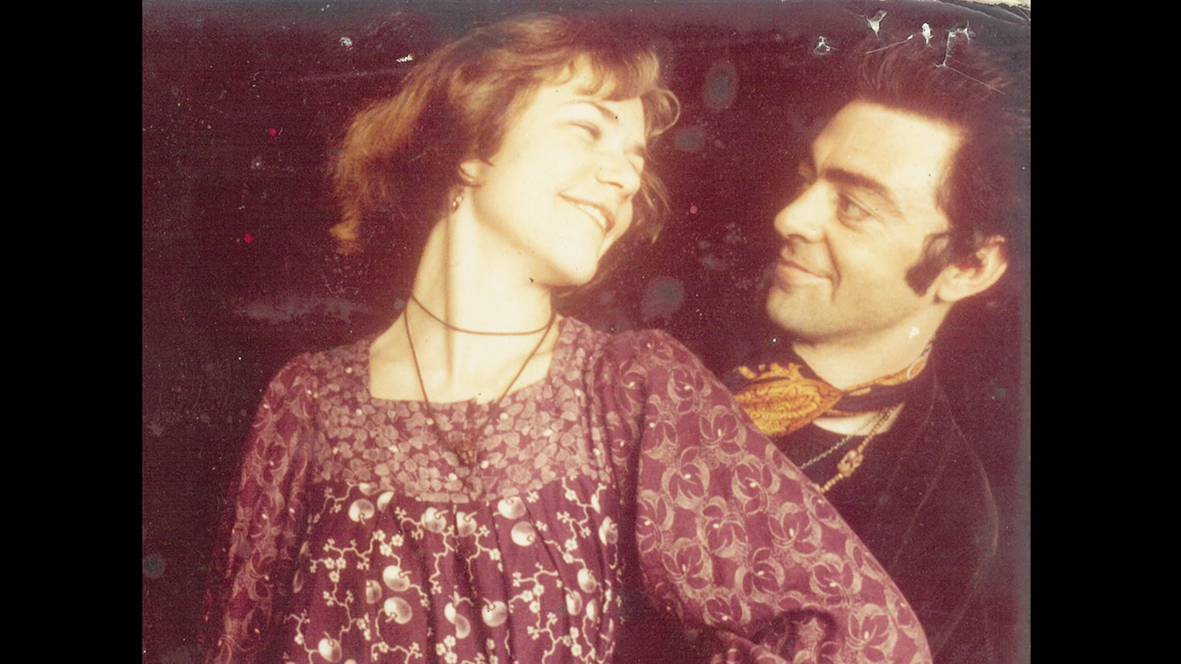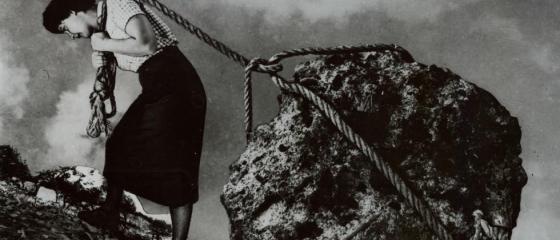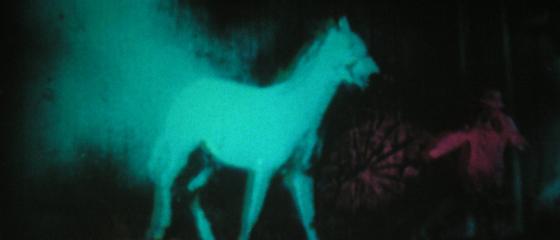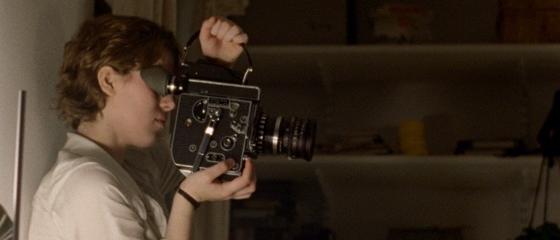Four absolute premieres and one national premiere increase the attraction of Andalusian Panorama Feature Films this year. The section is an exceptional showcase for some of the best works from the community’s audio-visual crop. And at the same time it converges with the general programming line in the search for directors with a gaze of their own, something that local creators value, as in many cases their distribution process begins here.
The documentary still has a notable importance, but at the same time it confirms its liberation from traditional codes. It is gradually abandoning its dependence on television schedules and moving into more open modalities, compatible with the new approaches that all screens, large or small, are assuming. And it is advancing in recognition of the subjective towards the voluntarily complex (not complicated), free and honest territory of non-fiction.
An excellent example of this could be Nobody Sleep, by Mateo Cabeza, a director who has grown along with the Festival since his short films, (Sevilla Santa, La vida sigue igual) and is now having the premiere of his first feature film here. In it he takes a risk (and convinces) with the transparent ensemble sketch of a collective: Danza Mobile. With no intervention other than the inevitable camera, the film achieves an unusual, admirably respectful approach to this company which includes people with Down’s Syndrome and to its process of creation, shot through with the powerful vibration of everyday life.
In a different line, Rota n’ Roll, the first film by Vanessa Benítez Zamora, refreshes the format with a clear, well-structured use of two classic tools: the interview and the archive. The subject, the cultural influence of the United States naval base in Rota in dull post-war Spain, unfolds all the images of attractive historic contrasts: large Chevrolets zig-zagged through the whitewashed streets and a “treasure in the air” (that is what the poet Felipe Benítez Reyes called the sounds of blues and rock that came from the base’s radio station) soaked into our movidas.
The other two world premieres, although different, have their roots in the vast terrain of fiction. Places, by Manuel Noguera is part of what we can call the “Different factory”, which since his famous Malviviendo has been a constant in his neighbourhood tragi-comedies, increasingly agile and more carefully made, without losing sight of Internet as an area of reference, but also opening up to other platforms. Beyond the obvious link of his team, in front and behind the cameras (among others, David Sainz, Teresa Segura or Noguera himself, who in this film expands Buster, his moustachioed anti-hero), Places stresses the indie, ensemble naturalism that characterises this collective in order to weave various stories of people in places.
The Wounds of the Wind is the directing debut of Juan Carlos Rubio, playwright and scriptwriter, who has adapted for cinema his own successful play of the same name. The two protagonists who for years have captivated audiences from the stage now do the same in front of the camera: Daniel Muriel and the Malaga actress Kiti Mánver, who will receive the RTVE award during the Festival. The unquestionable theatrical debt, far from being hidden, becomes a mark of style, reinforced, for example, with spatial and temporal transitions, or with looks to camera which break some of the conventions of classic audio-visual fiction.
The national premiere is that of Beyond the Stage, by Nonio Parejo, which can be seen in Seville after its recent premiere at the prestigious Cinespaña in Toulouse. Parejo, an historic figure in Andalusian documentary (Campos de Níjar, Los presos del canal…), now looks at the Lebrijano Theatre, a reference in anti-Franco cultural resistance, and at the figure of its ideologist Juan Bernabé who, although he died when barely 25, is considered one of the great innovators of Andalusian theatre. And the intention of Beyond the Stage is completely in tune with those young people as regards faith in the political power of art.
That social responsibility is also found in Samba, An Erased Name, by Mariano Agudo, a director who has participated in recent editions of the Festival with other works for the production company Intermedia (Habitar la Utopía, Boliviana). With the extreme respect for the subject, its protagonists and the spectators, which is the trademark of the company and the director, Agudo is a companion on a return trip, rare in African migration: that which Mahmud, a Senegalese man living in Seville, makes to his country of origin, following the trail of Samba Benjai, a fellow countryman who disappeared on his way to the European dream.
Almost a sub-genre, the “accompanying” documentary can also define Wind Horse, by Moisés Salama, who discreetly films Nando Fernández de Castro. The septuagenarian libertarian unreservedly opens his intense life to camera: his angry anti-Franco militancy, his exile in post-’68 Paris; his experience with drugs and the effervescence of free love or his links with well-known figures in unlabelled thought, such as García Calvo, Foucault or Deleuze. A phrase by the latter, quoted in the film by Amador Fernández Savater, could act as a footnote to this personal portrait, which is also generational: “There is a youth for each age”. And both the work and the subject become even more attractive by dialoguing with 15M and the present, that wind horse.
The footsteps of another character guide Rest in Peace, Mr. Hopper, by Aurelio Medina and Daniel García. The Mr. Hopper is Dennis Hopper, who in 1970 filmed The Last Movie in the Peruvian town of Chinchero, after having shaken up American counter-culture a year before with Easy Rider. In that film, which was much more experimental than the industry could accept (it had very little distribution), what most interested Medina and García was the ending, in which some men “armed” with wooden cameras chase Hopper, who flees on horseback through the impressive terraces surrounding the town. Who are those men? And what films would they have shot? Those are the questions the directors now try to answer in this documentary.
The tenth feature film comes to the section after winning the Imagenera Award 2017: Ruibal, por libre, by César Martínez Herrada, is a portrait of the singer-songwriter Javier Ruibal, who recently received the National Current Music Award. His 35 year career goes by, record by record, friend by friend, leaving something like a beautiful audio-visual anthology of his very particular style in which there is a confluence of jazz, flamenco and other sounds. In the background, his landscapes, the cities that have also woven his fusion, from Havana to New York, from Seville to Barcelona. And of course Cadiz. And his native port, that of Santa María.

IMPORTANCE AND PULSE OF THE ANDALUSIAN SHORT FILM
When we talk in these years about the thrust of Andalusian audio-visual production, we have to give deserved credit to the importance of the short film and its increasingly dynamic pulse. And certainly not (or not only) as a training ground but as an autonomous, complete form, in which some creators are making important cinema without complexes. That is the case with the wide ranging section included this year in Andalusian Panorama, in which we also see the diversity of perspectives, genres and subjects permitted by this form.
Directors like David Muñoz or Manuel Jiménez come back to the Festival reclaiming their signs. The former inserts in A Farewell to All That the uneasy visibility of metalanguage in his anthropological search for the origin of the verdiales. The latter (an award winner two years ago with Show me now!) remains attentive in Stolen Conversations to immediate wonder.
Other documentary proposals brilliantly follow more academic models: The Resurrection Club (with which Guillermo Abril and Álvaro Corcuera have been nominated for the Goya) explores death row with a shiver. Finis gloriae mundi, by Sándor M. Salas, El afilaó, by Julián Azcutia, and Las altas aceras, by Javier Polo, travel through more amiable spaces accompanying an organ restorer, a street knife-sharpener and the humourist Paco Aguilar.
Fiction predominates. In Ayer o antesdeayer, by Hugo Sanz, there is splendid acting work at the service of a peculiar road movie with sisters. Pez, by Javier Quintas, and El atraco, by Alfonso Díaz, apply a certain comic touch to social criticism.
Love, by Ana Rosa Diego and Mercedes del Río, and Differences, by Isabel Alberro, look at couples’ relationships from a critical gender perspective. Script Problems, by Bernabé Bulnes, alludes in its title to the storyteller’s responsibilities.
Una china en el zapato, by Adrián Ramos and Oriol Segarra, deals skilfully with exile, heartbreak and hope. A House in the Country, by Chiqui Carabante, takes the bonds of neighbourhood to grotesque madness. Cachorro, by Jesús Rivera, suggests with an amazing economy of means the seriousness of violence and the nuances of a complex mother-son link.
Out of competition, the animated short Guajira, by Jesús Guisado, offers an imaginative version of the comings and goings of the singing style that gives it its title. And Sueñan en Alepo, by Rycardo Moreno, is the first audio-visual work by this well-known guitarist from Lebrija. In it he expands on the repercussions of a homonymous theme based on a text by Eduardo Galeano.
By Juan Antonio Bermúdez






